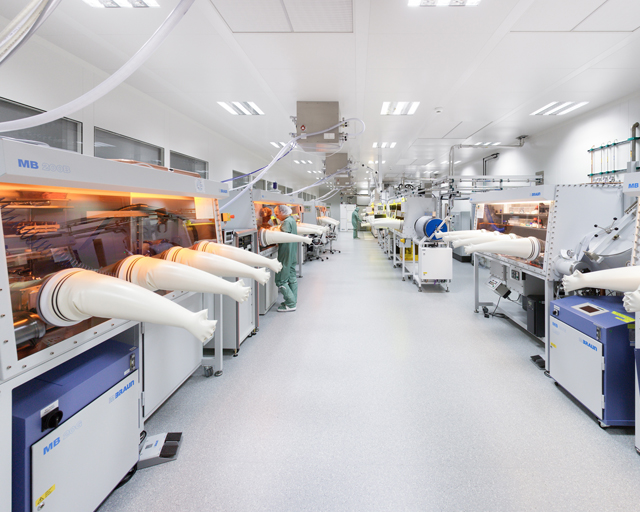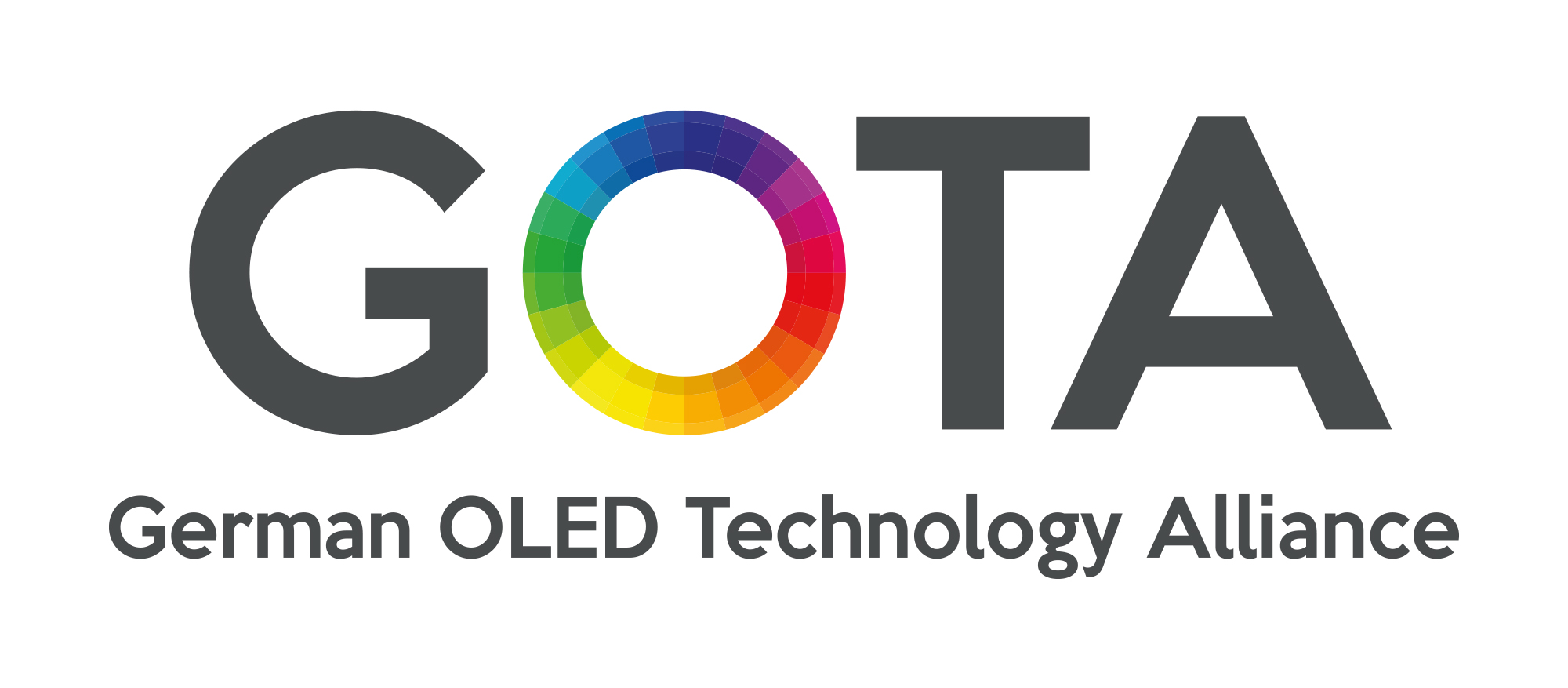LOPEC 2017 | OLED production facility from a single source
The Fraunhofer Institute for Applied Polymer Research IAP in Potsdam and three other German companies have been commissioned by a Chinese producer to develop an OLED production facility for its site in China. The four development partners have formed the consortium GOTA - German OLED Technology Alliance – in order to develop, under one roof, the materials and technologies needed for printed electronics and machine engineering. The Fraunhofer IAP will present its know-how in the field of printed electronics at LOPEC, the international exhibition for printed electronics, which will be held in Munich from March 29 – 30, 2017.
GOTA at LOPEC: Hall B0 | Fraunhofer IAP: Booth 203 | Notion GmbH: Booth 200 |
MBraun Inertgas-Systeme GmbH: Booth 202 | Von Ardenne GmbH: Booth 210
The new production facilities will be able to print large quantities of organic light-emitting diodes (OLEDs) for a special application. The preliminary work on the new production facility is being conducted by the partners in Germany. This requires expertise in many areas, including plant engineering for clean room conditions, inert gas technology, inkjet printing and vacuum deposition. The Fraunhofer IAP will take on the development of the printable OLED materials and the OLED modules. The processes for producing the OLED application will be developed at its own pilot plant for organic electronics in Potsdam-Golm.
»As a member of GOTA we are able to offer the market a turnkey production facility for OLED applications. The Fraunhofer IAP fills the gap between the requirements made by the customer and the challenges involved in machine engineering. Mechanical engineering companies are generally not positioned to develop processes,« explains Dr. Armin Wedel, OLED expert and division director at the Fraunhofer IAP.
The basic processes were developed at IAP’s pilot plant in Potsdam. In the coming six months the processes will be transferred to the production plant, which is currently being constructed in Munich by the company MBraun. Here, all of the partners’ components will come together. This process requires intensive collaboration onsite between the GOTA partners. Once this is complete, the plant will be shipped to its intended destination in China and reassembled there. Dr. Wedel’s team will also be on hand to commission the plant.
All four GOTA partners will exhibit in Hall B0 at LOPEC, an international exhibition for printed electronics. The Fraunhofer IAP will present its OLED modules along with organic solar cells based on flexible and solid substrates.
- More information about GOTA: German OLED Technology Alliance (GOTA) founded
- Fraunhofer IAP department Functional Materials and Devices
The Fraunhofer IAP and the OLED Technology Alliance, GOTA
The Fraunhofer IAP develops processes and materials for future OLED production facilities in close cooperation with the plant engineering companies MBraun Inertgas-Systeme GmbH in Munich, Notion GmbH in Schwetzingen and ARDENNE GmbH in Dresden. The four partners have formed the OLED Technology Alliance GOTA in order to offer the market turnkey OLED production facilities.
The Fraunhofer IAP has been conducting research on organic electronic systems for 20 years and focuses on solution-processed devices used in OLEDs, OTFT, OPV, perovskite solar cells, sensors and actuators. Several processing technologies are available in a large clean room. These include spin coating, material evaluation in lab devices, advanced processing technologies, such as inkjet printing and high-precision slot die coating on a robot-controlled S2S pilot line for dimensions up to 150 mm x 150 mm, and various evaporation and encapsulation technologies.
Last modified:

